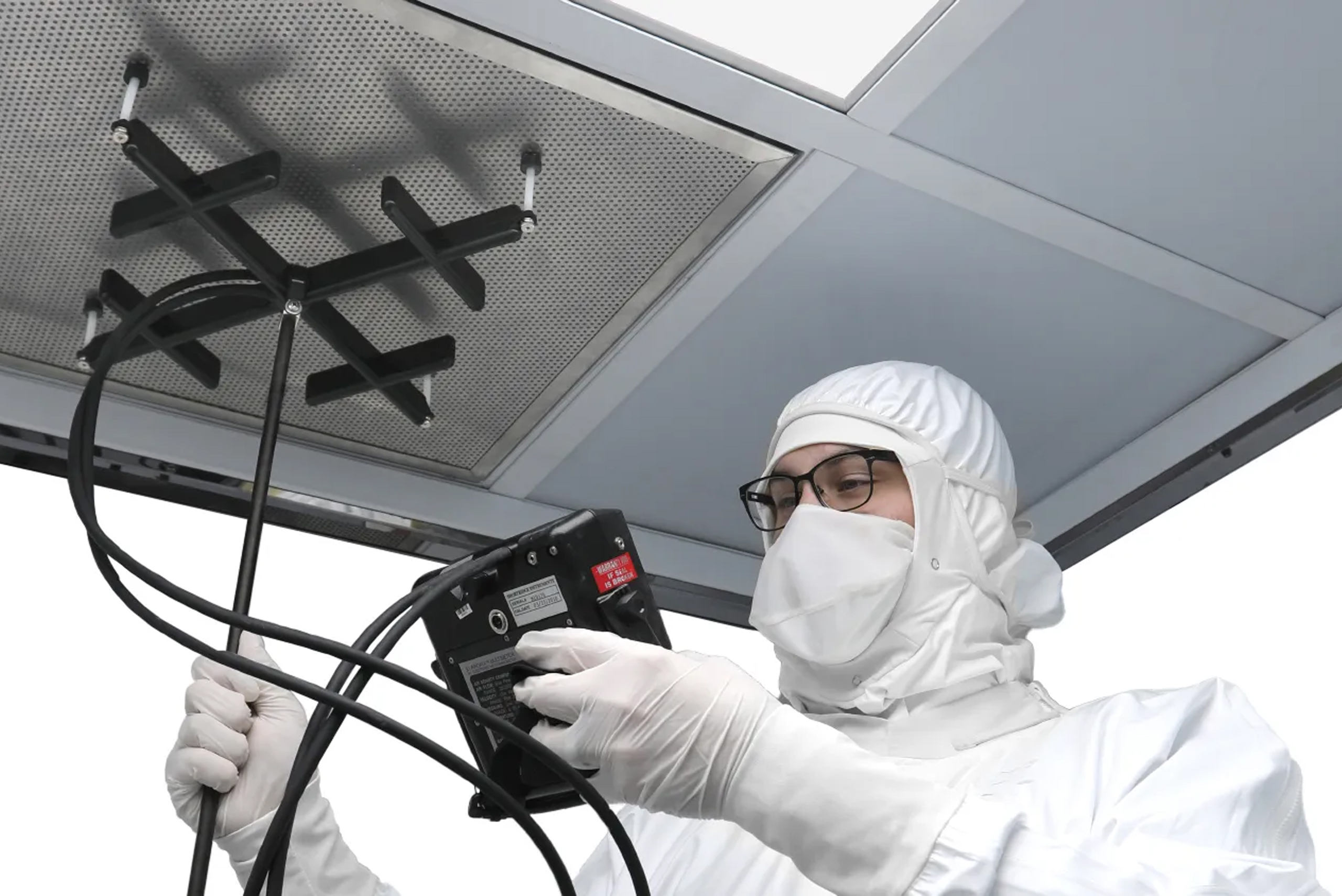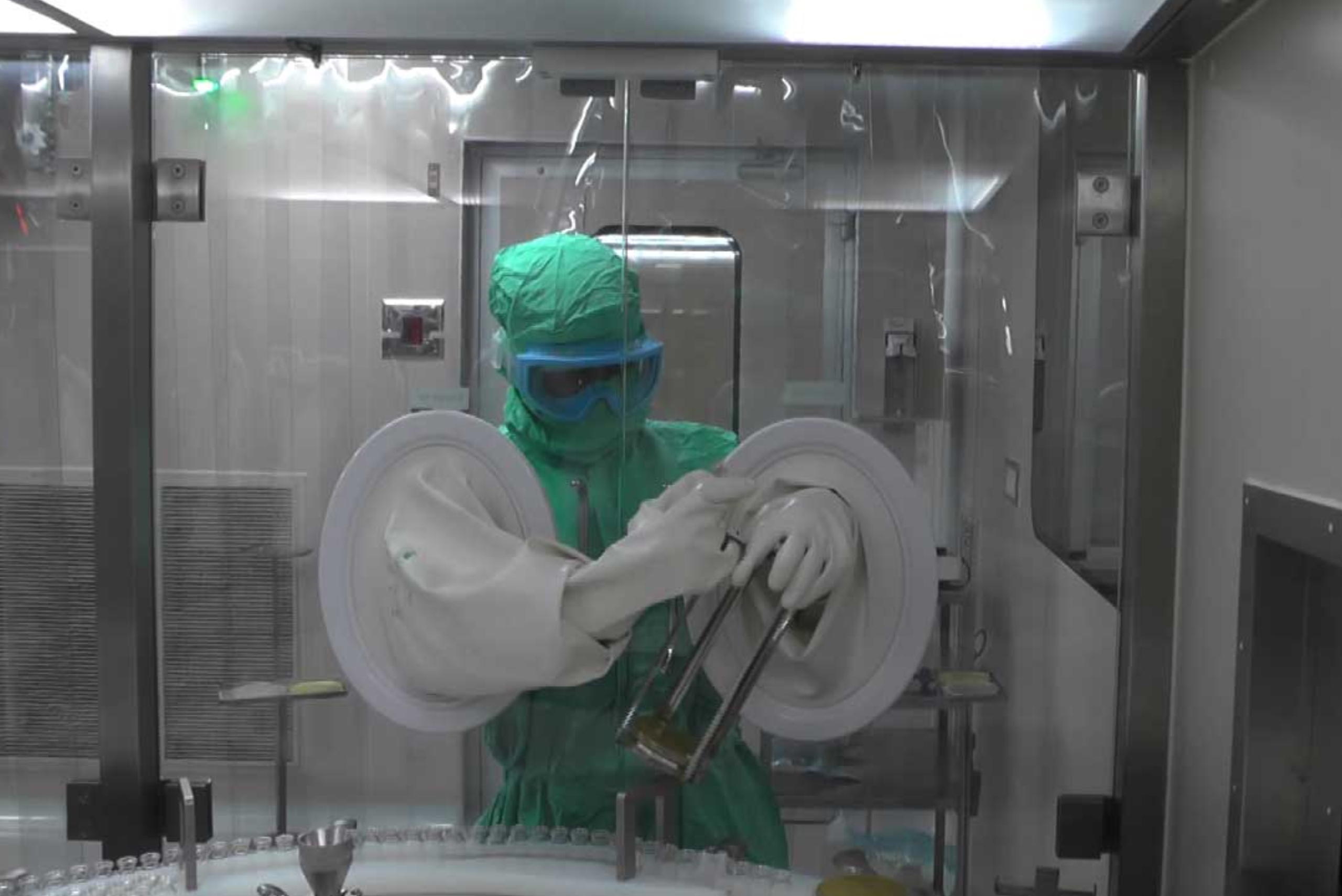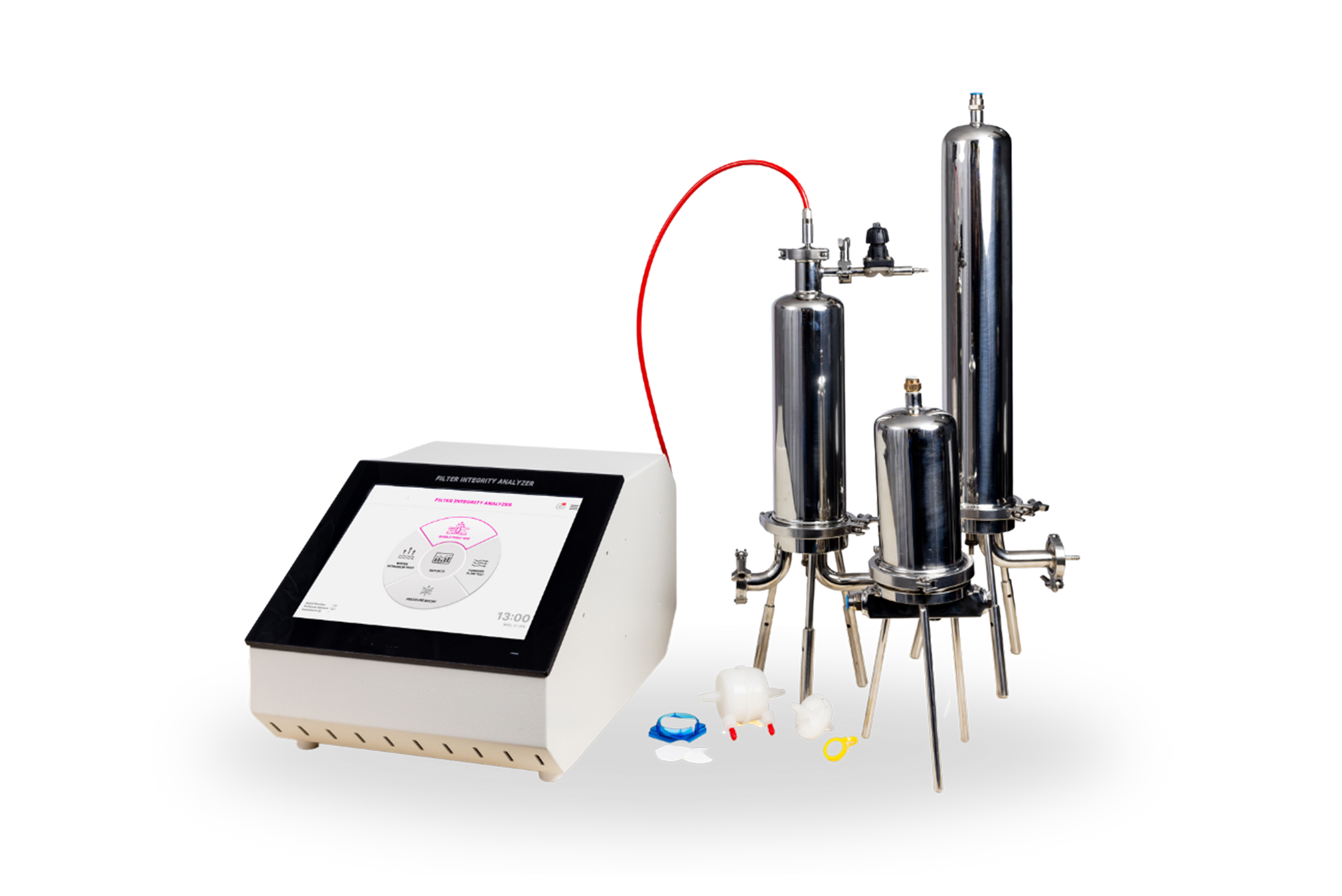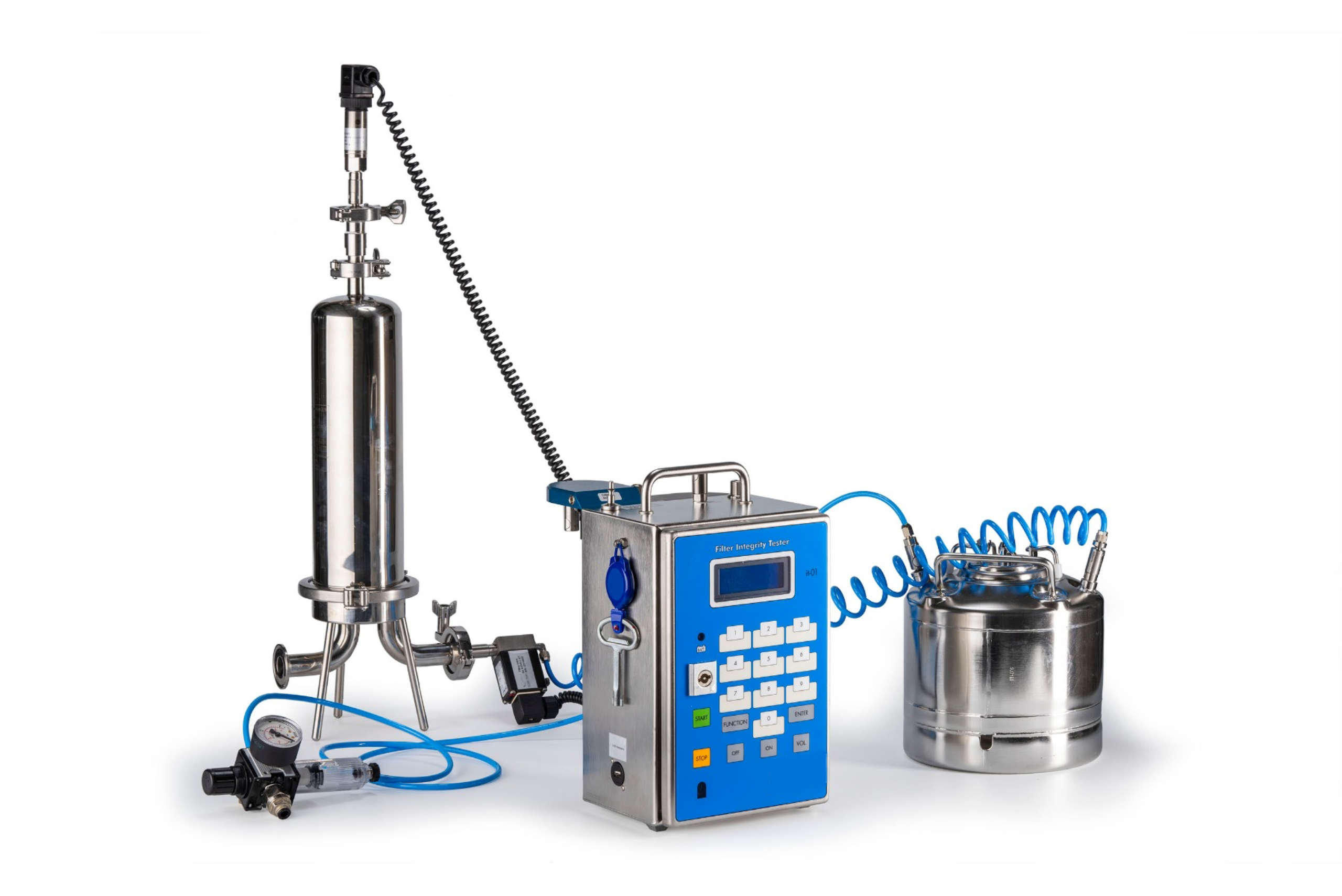Ensuring regulatory compliance and environmental control for pharmaceutical and biotechnology facilities.
- Filter Face Velocity, Duct Velocity, Fresh Air & Air Velocity
- CFM & ACPH Measurement
- HEPA Filter Leak Test (Plenum, Terminal, LAF, Isolator, Hot Air Unit – PAO Oil Based)
- Non-Viable Particle Count
- Recovery Test
- Airflow Visualization Test
- Power Failure & Induction Test
- Media Fill Videography
- Sound Level & Lux Meter Test
- Containment Leak Test
Instruments Used
- Vane/Hot Wire Anemometers
- Air Capture Hood (TSI – 11 Nos)
- Particle Counter (PMS – 22 Nos)
- Photometer (ATI – 10 Nos)
- Aerosol Generator (ATI – 12 Nos)
- Data Logger (Testo – 850 Nos)
Comprehensive testing of compressed gases to maintain product safety and compliance.
- Dew Point and Moisture Content
- Oil/Mist/Hydrocarbon Test
- Particle Size Concentration
- Bubble Point Test
- Viable & Non-Viable Count
- Gases Testing (CO2, CO, HC, H2, O2, H2S)
Instruments Used
- Compressed Air Validation Kit
- Filter Integrity Analyser
- Particle Counter
- Portable Analytical Tools
Media fill is a simulation of the aseptic manufacturing process where a sterile microbiological growth medium is used instead of the actual drug product to assess the sterility assurance of the entire process.
Key considerations during a media fill include:
- Duration of the longest permitted run on the production line, as extended operations may increase the risk of contamination due to operator fatigue.
- Types and frequency of interventions, both routine and non-routine. This includes standard actions typically performed during each run as well as unexpected events such as equipment maintenance, line stoppages, and adjustments due to breakdowns.
- Definition and classification of allowable interventions, including:
- o Grade A interventions: Performed under laminar airflow in the most critical zones.
- o Grade B interventions: Occur in surrounding clean areas with lower criticality.
- Practice of all interventions during media fills to ensure personnel are trained to perform them aseptically.
- Inclusion of specific operations, such as lyophilisation (freeze-drying), aseptic assembly of equipment, and machine setup both at the start of production and during ongoing manufacturing activities.
- Monitoring the number of personnel involved and evaluating the nature of their tasks and movements within the aseptic area.
- Simulation of 'worst-case scenarios', such as processing the largest containers with the widest openings or running small ampoules at high speeds, which may lead to frequent jamming and increased intervention.
- Documentation of key parameters like duration, day of the run, line speed, container size, and total number of containers processed.
- Video recording of the media fill may be used as a valuable tool to review and assess operator behavior, identify deviations, and support investigations that could impact the sterility of the process.
What is Filter Integrity?
Filter integrity is the ability of a filter to perform its intended function without any damage, defects, or leakage, ensuring it retains particles or microorganisms as required by its rating especially in sterile pharmaceutical applications.
Types of Filters:
- Hydrophobic Filters
- Hydrophilic Filters
Types of filter integrity testing:
- Destructive Testing
Destructive Testing is by and large carried out at filter manufacturer’s location from each lot as per their pre-defined sampling plan. - Non-Destructive Testing
Filters used in the previous batch may be damaged or distorted ultimately posing questions on their integrity for the past and coming batch. Reusing a filter adopts non-destructive testing where it is checked for its intactness and quality for the next batch.
The Following are the different methods for non-destructive filter integrity testing
- Bubble Point Test
- Forward flow Test/Diffusion Test
- Pressure Decay Test
- Water Intrusion Test
What is Bubble Point Test?
The Bubble Point Test is a non-destructive filter integrity test used to verify the pore size and integrity of a membrane filter by determining the minimum pressure required to force air or gas through the largest wetted pore of the membrane.









